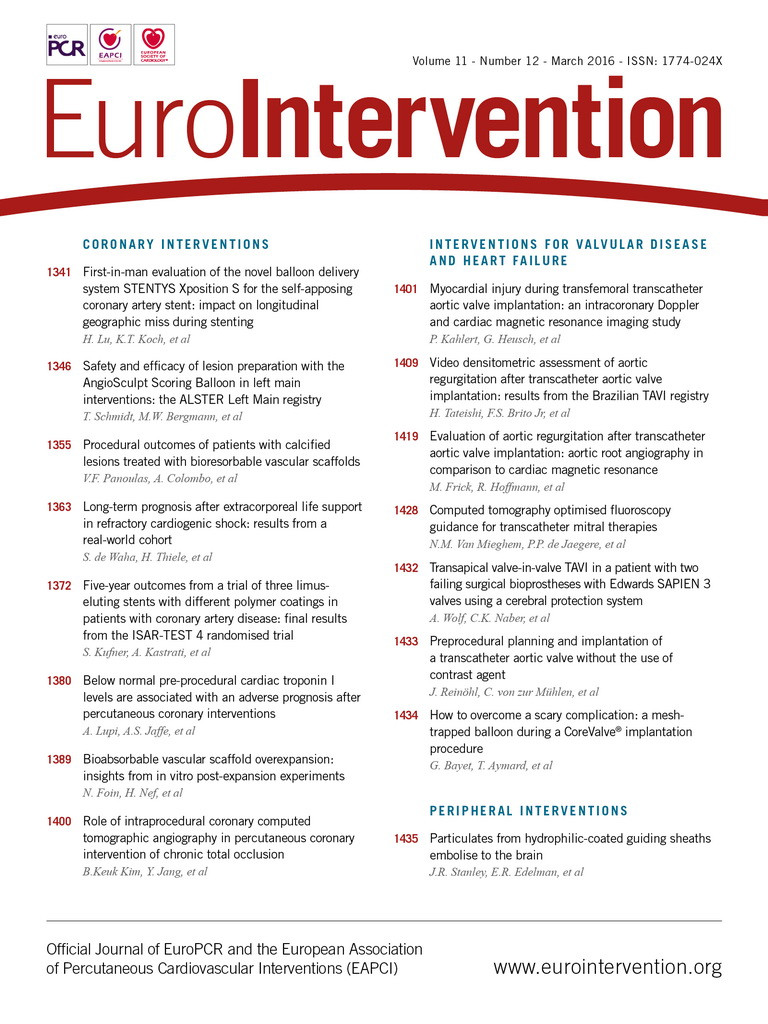
We sincerely appreciate the interest of Piraino et al in our paper1 describing the occurrence of subacute bioresorbable vascular scaffold (BVS) thrombosis in a very old patient with recurrent in-stent restenosis (R-ISR) in a heavily calcified vessel. We fully agree with their concerns regarding the importance of final result optimisation in patients with “recalcitrant” in-stent restenosis (ISR)2,3. In this setting, characterised by the classic “metallic onion skin” underlying substrate, tackling any residual resistant underexpansion is of paramount importance2,3. Likewise, the strategy of “leave nothing behind” is especially appealing in this challenging patient subset with multiple metal layers. Certainly, drug-coated balloons and BVS could be of particular value in these patients. Furthermore, we also concur with the notion that special care should be taken to optimise BVS results in challenging anatomic scenarios. However, in spite of all our optimisation efforts the final result after BVS in our patient was suboptimal, as readily demonstrated by optical coherence tomography (OCT). Therefore, this factor was probably implicated in the pathogenesis of the subacute BVS thrombosis. Interestingly, at the time of reintervention, OCT also unraveled the occurrence of significant “recoil” of the BVS which probably also played a major coadjuvant pathophysiological role in our patient. Fortunately, after the described intervention, our patient remains completely asymptomatic (current follow-up of 28 months). In a subsequent preliminary series of patients with ISR systematically treated with BVS, we demonstrated the value of OCT to guide the procedure and optimise final results4.
Finally, the Spanish RIBS VI prospective study included 135 patients with ISR treated with BVS. The study is currently ongoing but no patient has suffered from definitive acute BVS thrombosis. Final results of this study will help to elucidate the safety and effectiveness of BVS in patients suffering from ISR. However, only well-designed head-to-head randomised studies will be able to establish definitively the relative safety and efficacy of currently available therapeutic strategies in these patients.
Conflict of interest statement
The authors have no conflicts of interest to declare.

